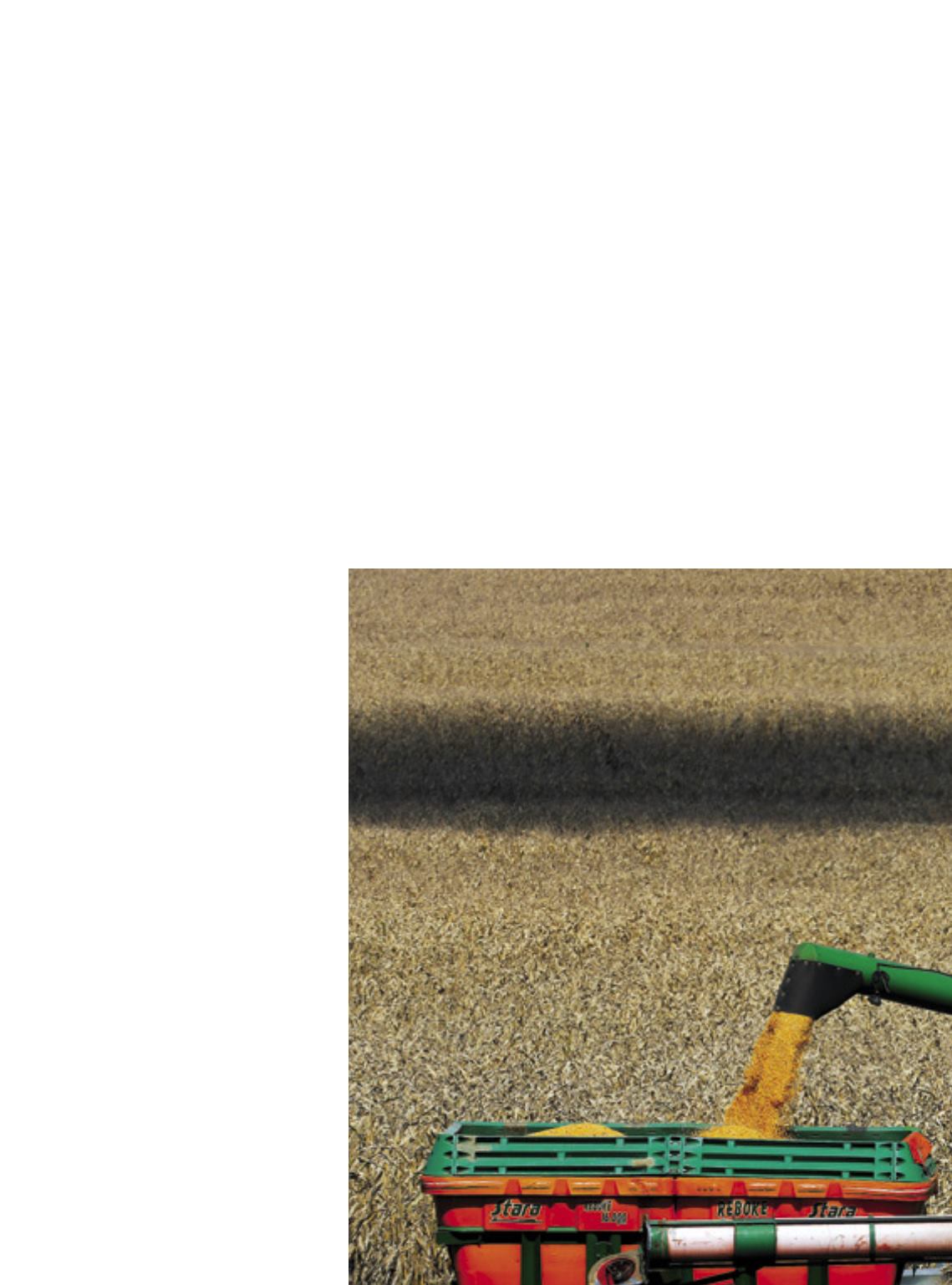
T
he biggest corn crop ever har-
vested in Brazil was and will
remain as such, at least for the
time being, the 2016/17 sea-
son. The 2017/18 growing sea-
son is estimated at 92.34 million tons,
down 5.6 percent from the record crop
of 97.84 million tons in the previous sea-
son, according to the fourth survey con-
ducted by the National Food Supply
Agency (Conab). This historical volume
was 47 percent higher than the volume
in the 2015/16 crop year. Should the vol-
ume foreseen for 2018 materialize, even
so it will be the second largest crop reg-
istered in the Country. Conab estimates
gross income of R$ 35.4 billion for the
2017/18 season, down 30 percent from
the amount estimated for the previous
crop, influenced by depressed prices and
smaller production volume.
The first or summer corn crop reached
30.46 million tons in the 2016/17 season,
up 18 percent. The positive result stems
from the 2.4 percent bigger area devoted
to corn, along with 15.5 percent in pro-
ductivity. In the 2017/18 growing season,
Conab officials foresee a volume of 25.17
million tons, down 17.3 percent. In the
second or winter crop in 2016/17, pro-
duction reached 67.35 million tons, up
65 percent. The jump resulted from the
15 percent bigger planted area and an in-
crease of 44 percent in productivity. The
forecast for the next crop signals 67.17
million tons, down 3 percent.
Corn planted area is estimated at
17.085 million hectares in the 2017/18
growing season, down 2.9 percent, ac-
cording to Conab sources. The reduction
reflects the drop in prices caused by ex-
cessive supply in the previous crop year.
Over the past crops, the trend has been
for bigger planted area in the second
Taking a
pause
After the record cropof 97.84million tons
in the 2016/17 growing season, the newcrop is
likely drop 5.6%, as a result of depressed prices
crop, after soybean harvest. However,
the size of the area varies in accordance
with the weather conditions for corn.
Average productivity is expected to
reach 5,405 kilograms per hectare, down
8.2 percent from the 2016/17 season.
Corn is produced in all states through-
out Brazil. The leading growers of the ce-
real are Mato Grosso and Paraná, which
account for 30 percent and 17 percent of
the volume, respectively.
The record crop in Brazil and in the
world (1.075 billion tons) made pric-
es drop in 2017. Surveys conducted by
the Center for Applied Studies on Ad-
vanced Economics (Cepea), of the Luiz
de Queiroz College of Agriculture (Esalq),
a division of the University of São Pau-
lo (USP), revealed that the year started
with high prices, favored by the reduced
supplies in 2016. The arrival of the cere-
al of the first crop exerted great pressure
over the domestic prices. In the first half
of 2017, the Esalq/BM&FBovespa corn in-
dicator, based in Campinas, plummeted
33.8 percent. These price decreases were
Sílvio Ávila
70


